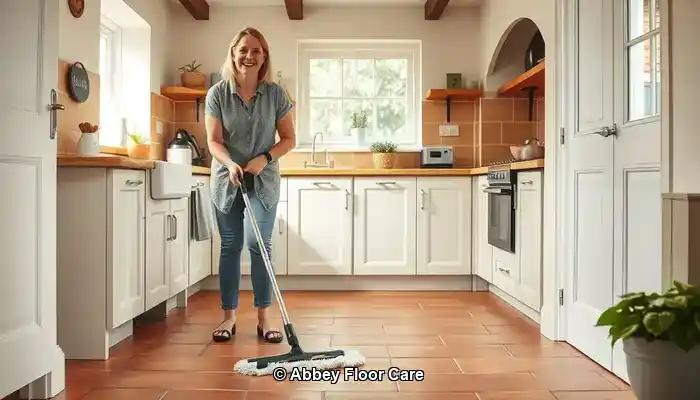
Last Updated on September 29, 2025 by David
Your Comprehensive Guide to Maintaining Pristine Terracotta Floors
-
- <b>Terracotta</b> tiles possess natural porosity, making them susceptible to rapid dirt absorption, particularly in humid climates like Surrey.
- Proper sealing is vital for protection against moisture and grime that can infiltrate the tile’s surface.
- Consistent maintenance is crucial—daily sweeping and weekly mopping with pH-neutral cleaners are essential for maintaining the tile’s visual appeal.
- Avoid harsh chemicals and steam mops, as these can harm the sealant and damage the tile’s surface.
- Eco-friendly cleaning products are highly advisable, especially in homes with pets and children, ensuring safety and cleanliness.
- Professional restoration services can provide deep cleaning and resealing, ensuring long-lasting protection and aesthetic appeal.
- Strategically placing rugs and mats in high-traffic areas can significantly minimize the transfer of dirt and debris onto your floors.
- <b>Controlling moisture</b> is essential—ensure proper ventilation and promptly clean up spills to prevent staining and mold growth.
Understanding the Rapid Dirt Accumulation on Terracotta Tiles
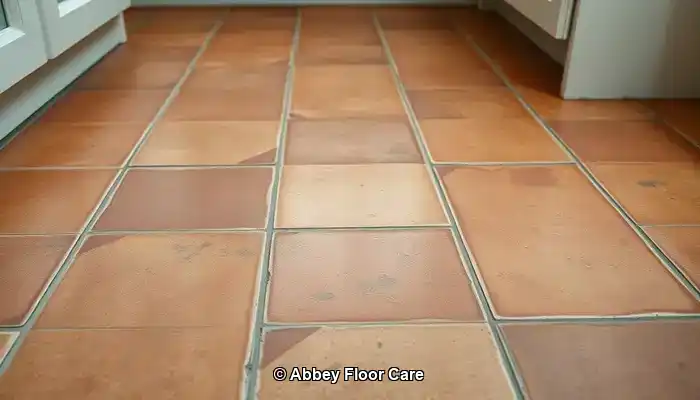
Terracotta tiles offer an attractive flooring solution, especially in traditional or rustic-style homes throughout Surrey. Their warm hues and natural textures contribute a distinct character to any interior environment. However, despite their aesthetic allure, terracotta is well-known for its tendency to become dirty very quickly. Understanding the elements that lead to this issue is crucial for implementing effective cleaning and maintenance practices.
Expert Tip: Best Practices for Daily Terracotta Floor Care
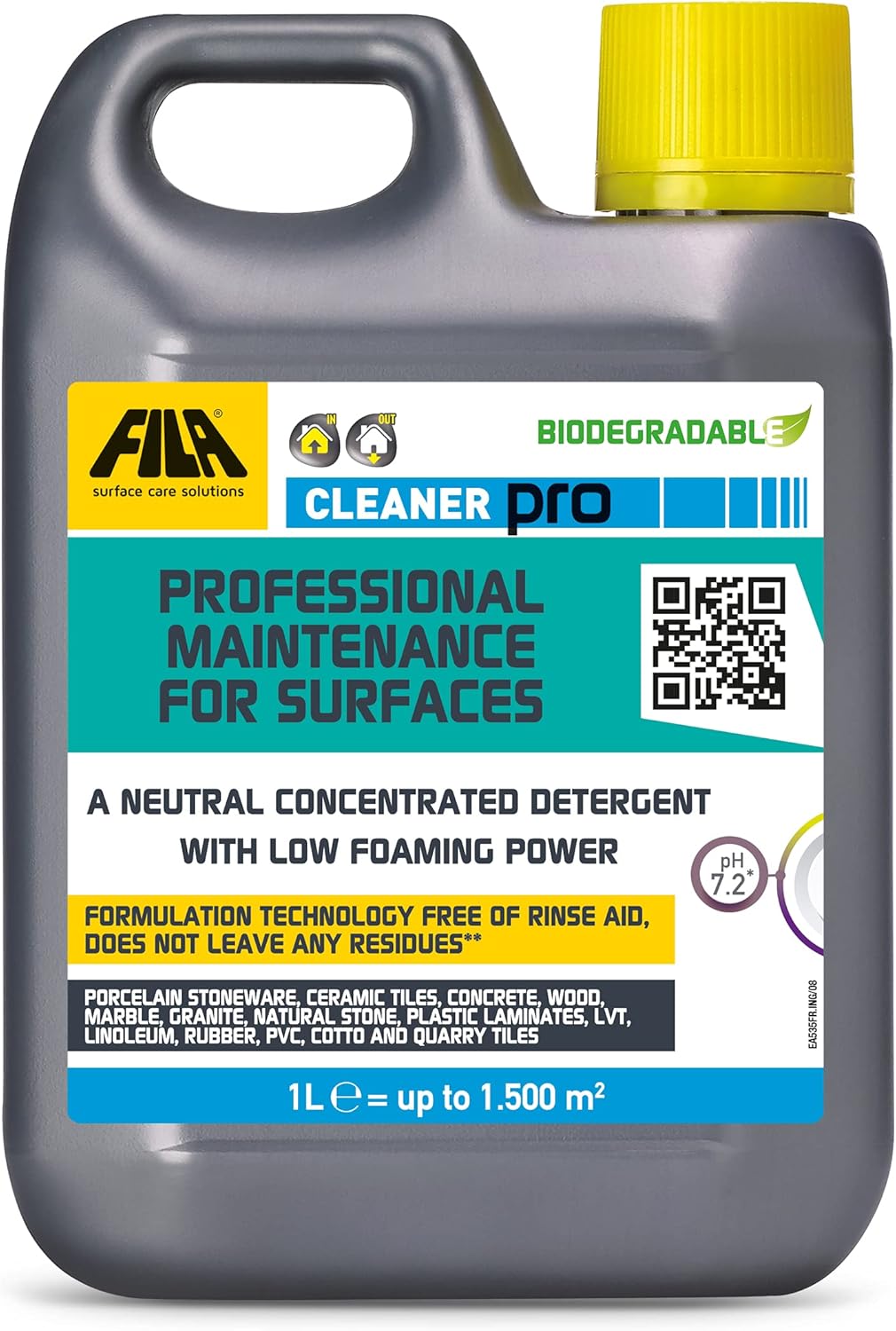
Fila Pro Floor Cleaner
|
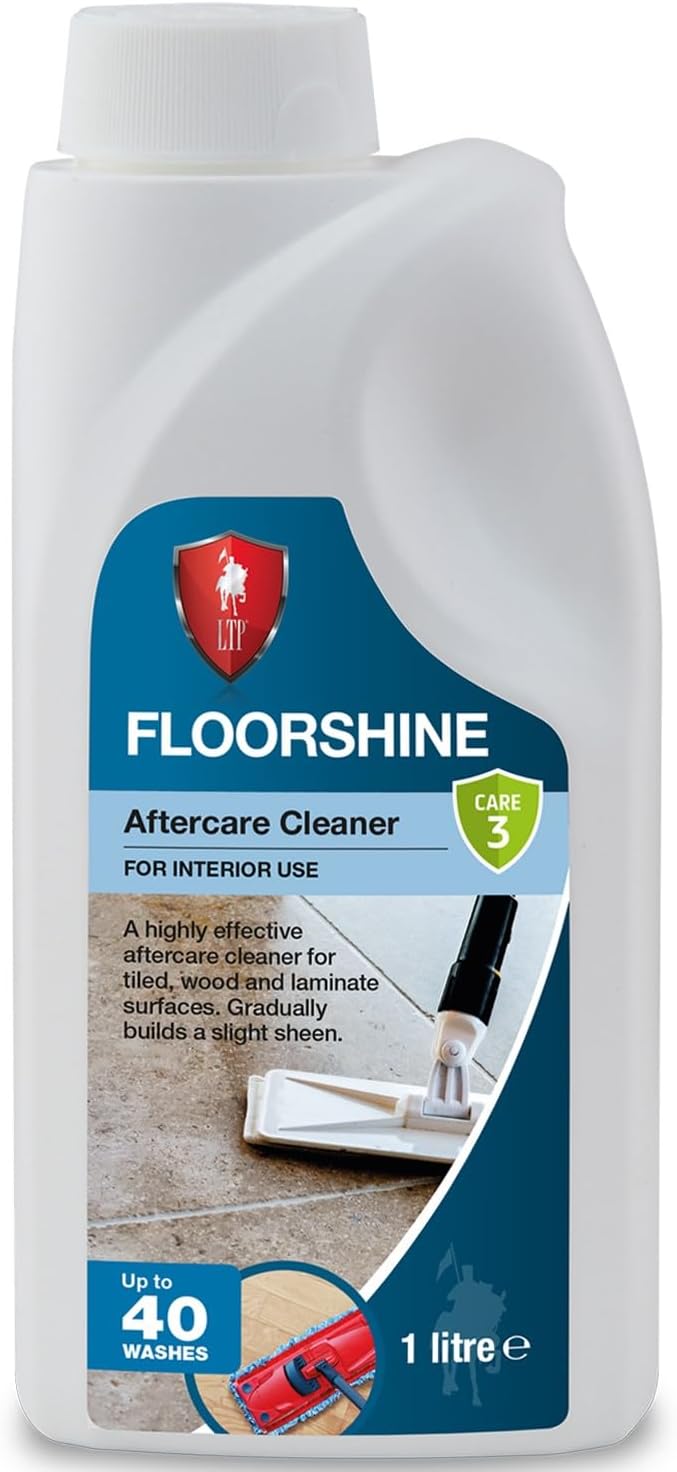
LTP Floorshine
|
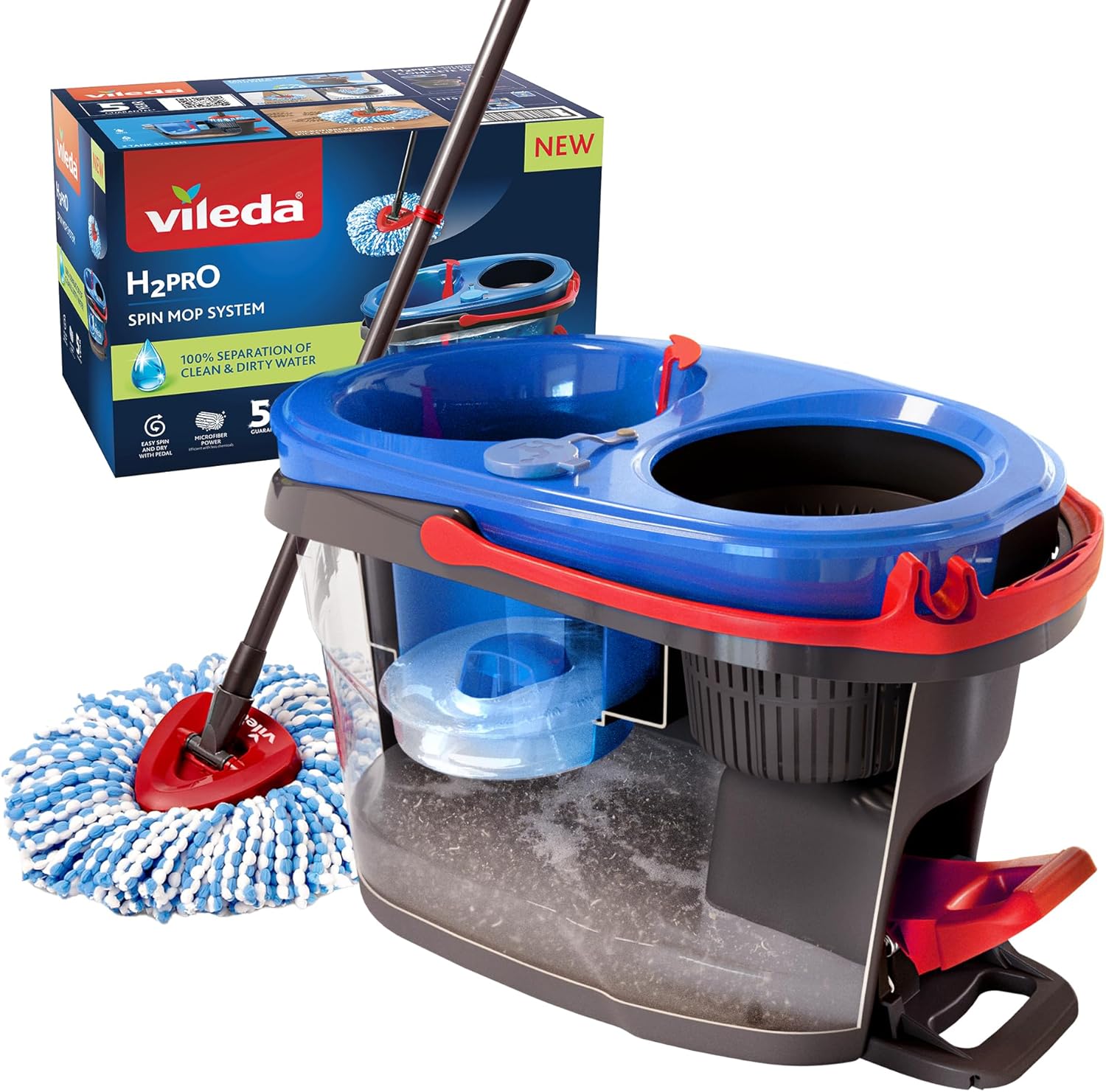
Vileda H2PrO Spin Mop System
|
Exploring Porosity: The Main Reason for Dirt Accumulation
Terracotta is crafted from natural clay and is fired at lower temperatures compared to other tile materials. This firing method produces a highly porous surface that allows the material to absorb moisture, oils, and dirt akin to a sponge. This porosity implies that grime can infiltrate deep within the tile, making it challenging to remove with standard cleaning techniques.
Unsealed terracotta is especially prone to staining. Without a protective layer, even minor spills or muddy footprints can leave enduring marks. Over time, this can result in a dull and stained appearance that typically requires professional intervention to restore.
Effects of Surrey’s Weather on Dirt Accumulation on Terracotta Floors
The weather conditions in Surrey significantly influence how quickly terracotta floors gather dirt. The region’s frequent rainfall and dampness lead to increased moisture indoors, particularly in areas such as entryways and conservatories.
Homes located near wooded areas or gardens are even more vulnerable to dirt buildup. Soil, pollen, and organic debris can easily be tracked onto terracotta surfaces, especially if shoes are not removed before entering the house.
Daily Habits That Lead to Increased Dirt Accumulation on Terracotta
In addition to environmental factors, daily routines can worsen the situation. Using inappropriate cleaning products—such as acidic solutions or bleach—can strip protective coatings and damage the tile’s surface. While steam mops are often favored for their convenience, they can drive moisture deeper into the tile, exacerbating the issue.
High-traffic areas, including kitchens and hallways, naturally endure more wear and tear. Without regular sweeping and mopping, dirt can quickly accumulate and become ingrained in the textured surface of the tile.
Implementing Proactive Measures for Spotless Terracotta Floors
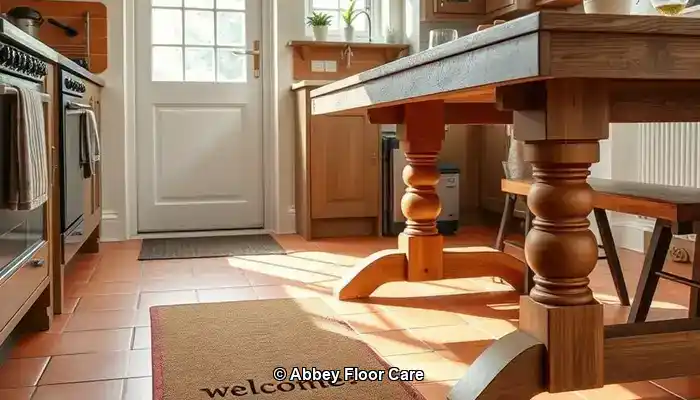
To maintain clean terracotta floors, implementing proactive strategies is crucial to prevent dirt accumulation from the outset. In homes across Surrey, where damp weather and garden-related foot traffic are prevalent, adopting preventative care is essential for preserving the natural beauty of terracotta tiles.
Applying Sealants: Your First Line of Defense Against Dirt and Stains
The most effective way to prevent terracotta from becoming dirty quickly is to apply a suitable sealant. A high-quality, breathable sealant establishes a protective barrier that repels moisture, oils, and dirt. For households in Surrey, where humidity levels may fluctuate, sealing is essential to avoid water absorption, which can lead to staining and mold growth.
Experts recommend resealing terracotta tiles every 12 to 18 months, depending on foot traffic and moisture exposure. Areas like kitchens, hallways, and conservatories—where frequent use occurs—may require more regular resealing. Always choose a sealant specifically designed for porous stone and avoid glossy finishes that may trap dirt on the surface.
Smart Design Choices: Enhancing Protection with Rugs and Mats
Thoughtfully placing rugs and mats can significantly reduce the amount of dirt that comes into contact with your terracotta tiles. Utilize durable doormats at entrances to capture mud and moisture before they enter your home. In high-traffic areas, like hallways or beneath dining tables, area rugs can provide crucial protection that helps minimize wear and tear on the tile.
For rooms that connect to the outdoors, consider using washable runners that can be cleaned frequently. These not only shield the tile but also enhance the warmth and style of your living areas.
Implementing Effective Moisture Management in Homes Throughout Surrey
The moist climate in Surrey can accelerate dirt buildup on terracotta. To combat this, use dehumidifiers in enclosed areas and ensure proper ventilation throughout your home. Promptly clean up spills and avoid leaving damp items, such as shoes or towels, on the floor.
If your terracotta is installed in a conservatory or garden room, consider adding blinds or UV filters to minimize condensation and sun damage. These straightforward adjustments can greatly influence how your tiles age and maintain their appearance over time.
By merging effective sealing, smart design choices, and moisture control, homeowners in Surrey can significantly slow the rate at which terracotta floors become dirty. The next section will delve into the best cleaning practices to maintain that fresh, natural appearance day after day.
Best Practices for Cleaning and Maintaining Terracotta Tiles
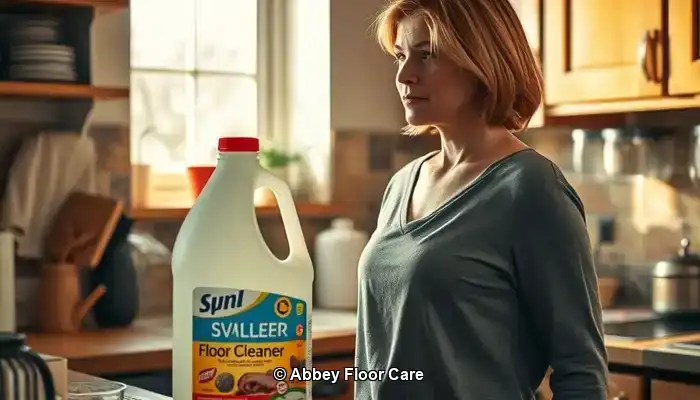
Even with proper sealing and preventative measures in place, terracotta floors need regular maintenance to preserve their natural beauty. The focus should be on utilizing the right techniques and products that clean effectively without compromising the porous nature of the tile.
Creating a Daily and Weekly Cleaning Schedule for Your Terracotta Floors
In homes across Surrey, where outdoor elements frequently enter, daily sweeping or vacuuming is essential. Utilize a soft-bristle broom or a vacuum equipped with a hard floor setting to remove dust, grit, and organic debris before it settles into the tile.
For weekly cleaning, mop with warm water and a pH-neutral cleaner specifically designed for natural stone. Avoid soaking the floor—damp mopping is the most effective method. Excessive water can seep into the tile, causing staining or mold growth, particularly in older or poorly sealed installations.
Choosing the Right Cleaning Products for Your Terracotta Tiles
Select cleaning products that are both gentle and effective. Look for labels that specify “stone-safe,” “non-acidic,” or “pH-neutral.” In Surrey, where eco-conscious living is on the rise, many homeowners prefer biodegradable cleaners that are safe for both pets and children.
Steer clear of multi-surface cleaners containing bleach, ammonia, or citrus extracts, as these can strip away sealants and etch the terracotta, making it more susceptible to future staining.
For stubborn stains, use a soft cloth with a diluted solution of stone cleaner. Avoid scrubbing with abrasive pads or wire brushes, as these can scratch the tile’s surface and create further challenges for future cleaning.
What to Avoid: Harsh Chemicals and Steam Cleaning Methods
While steam mops may seem convenient, they are unsuitable for terracotta. The high heat and moisture can penetrate the tile and weaken the sealant, leading to long-term damage. Similarly, acidic cleaners like vinegar or lemon juice—even when diluted—can erode the surface of the tile and cause discoloration.
Stick to gentle cleaning practices and always test new products on a small, inconspicuous area before applying them throughout your flooring.
Should You Opt for Professional Care or DIY Techniques for Terracotta Maintenance?
When it comes to the upkeep of terracotta floors, many homeowners in Surrey start with DIY methods. While regular sweeping and mopping can be beneficial, there eventually comes a point when professional care becomes not only helpful but necessary.
Identifying When to Consult a Tile Specialist in Surrey
If your terracotta tiles show signs of deep staining, uneven color, or surface wear, it may be time to seek expert help. Professional tile care specialists in Surrey use advanced equipment and stone-safe products that penetrate deeper than standard household cleaners. They can also assess whether your sealant has deteriorated and recommend an appropriate resealing schedule based on your home’s specific conditions.
Restoration services typically include deep cleaning, stain removal, and reapplication of breathable sealants that protect without altering the tile’s natural look. For older or heritage properties, specialists can match the original finish to maintain authenticity.
Evaluating Costs Against Longevity: Is Professional Care Worth the Investment?
While DIY cleaning might appear more cost-effective at first glance, it often leads to short-term solutions. Without adequate sealing and deep cleaning, dirt continues to accumulate, leading to more frequent maintenance and risking permanent damage.
In contrast, professional care can extend the lifespan of your terracotta floors. A single restoration session can revitalize color, eliminate embedded grime, and safeguard the surface for months or even years. In high-traffic zones, such as kitchens or hallways, this investment is often justified by reduced maintenance efforts and enhanced visual appeal.
Homeowners in Surrey who prioritize long-term property upkeep and curb appeal frequently discover that expert services provide peace of mind and superior results. Additionally, many local providers offer eco-friendly options and tailored maintenance plans to fit your lifestyle.
Exploring Eco-Friendly and Safe Cleaning Solutions for Terracotta
The earthy appeal of terracotta deserves a cleaning regimen that is equally natural. For homeowners in Surrey aiming to maintain clean floors without compromising health or sustainability, eco-friendly cleaning solutions are ideal. Fortunately, modern products and techniques simplify the process of protecting your tiles—and your household—without relying on harsh chemicals.
Utilizing Non-Toxic Sealants and Cleaners for Terracotta Maintenance
Traditional sealants often contain solvents that emit volatile organic compounds (VOCs), which can linger in the air and impact indoor air quality. Contemporary eco-friendly alternatives utilize water-based formulas that are low in VOCs and safe for use around children and pets.
When choosing a cleaner, search for labels indicating “biodegradable,” “plant-based,” or “stone-safe.” These products are specifically designed to lift dirt without harming the porous surface of terracotta. Brands that specialize in natural stone care typically offer concentrated solutions that can be diluted for everyday use, minimizing waste and packaging.
Selecting Pet- and Child-Safe Cleaning Options for Your Home
In busy Surrey households, safety is as important as cleanliness. Avoid using bleach, ammonia, and acidic cleaners like vinegar, as these can damage the tile and pose risks to pets and young children. Instead, opt for gentle formulations derived from coconut oil, citrus enzymes, or mineral-based ingredients.
For those who prefer DIY cleaning, a simple mixture of warm water and a few drops of castile soap can be surprisingly effective for light cleaning tasks. However, always test any homemade solution on a small area first to ensure it does not compromise the sealant or finish.
Embracing Sustainable Cleaning Practices for Terracotta Care
Eco-friendly maintenance goes beyond just the products used; it also includes the habits we cultivate. Utilize reusable microfiber cloths and mops instead of disposable pads. Regular sweeping can greatly reduce the need for frequent wet cleaning. When resealing, choose products that use recyclable packaging and have minimal environmental impact.
Many professionals in Surrey now provide green cleaning packages that employ certified non-toxic products and sustainable techniques. If you’re uncertain about where to begin, booking a consultation with a local expert can help you establish a routine that is both effective and eco-friendly.
Preserving the Visual Appeal of Your Terracotta Floors
Terracotta flooring brings warmth, character, and timeless elegance to homes in Surrey; however, its porous nature demands diligent care to remain clean and vibrant. By understanding the reasons behind dirt accumulation, effectively sealing the tiles, and adopting intelligent cleaning habits, you can greatly reduce grime build-up and extend the lifespan of your tiles.
Whether managing a bustling household or restoring a heritage property, consistency is critical. Daily sweeping, pH-neutral cleaning, and seasonal resealing can significantly enhance a well-maintained surface. When stains or wear begin to surface, do not hesitate to consult a local specialist for professional restoration.
Using eco-friendly products and safe cleaning routines ensures that your floors not only retain their beauty but also safeguard your health and the environment. With the right approach, terracotta can continue to be a stunning feature in your home for many years ahead.
Ready to protect your floors intelligently? Contact us today for expert terracotta maintenance tailored to the unique conditions of Surrey. Let’s collaborate to keep your home looking its best—naturally.
Your Top Questions About Terracotta Maintenance Answered
Terracotta floors are classic; however, they come with specific care requirements. Below are answers to the most frequently asked questions from homeowners in Surrey who wish to keep their tiles clean, protected, and visually appealing.
How Often Should I Reseal My Terracotta Tiles for Optimal Protection?
In most homes across Surrey, terracotta should be resealed every 12 to 18 months. However, this schedule can vary based on foot traffic, moisture exposure, and whether the tiles are indoors or outdoors. Areas such as kitchens, hallways, and conservatories may require more frequent resealing. If your tiles begin absorbing water or appear dull, it’s time to reseal.
Is It Safe to Use Vinegar or Bleach on Terracotta Floors?
No—vinegar, bleach, and other harsh or acidic cleaners can harm terracotta. These substances can degrade sealants and etch the tile surface, resulting in permanent discoloration. Always opt for pH-neutral, stone-safe cleaners specifically designed for porous flooring.
What is the Best Mop for Cleaning Terracotta Floors Effectively?
A microfiber mop is ideal for terracotta. It effectively captures dust and dirt without scratching the surface and uses minimal water, which is crucial for porous tiles like terracotta. Avoid sponge mops or steam mops, as these can oversaturate the tile and weaken the sealant.
Are DIY Cleaning Solutions Safe to Use on Terracotta?
Yes, but with caution. A mild mixture of warm water and castile soap can work well for light cleaning. Always test any homemade solution on a small, hidden area first. Avoid using anything acidic or abrasive, and never apply homemade cleaners to unsealed tiles.
What Should I Do If My Tiles Have Already Stained?
If stains have set in, professional restoration is the most effective solution. Specialists in Surrey can deep clean, remove embedded grime, and reseal the surface to restore the tile’s original color and texture. DIY methods may worsen the damage if inappropriate products are used.
The Article Tired of Dirty Terracotta? How to Keep It Clean Longer first found on https://www.abbeyfloorcare.co.uk
The Article Terracotta Cleaning Tips for Lasting Freshness appeared first on https://fabritec.org
The Article Terracotta Cleaning Tips for Long-Lasting Freshness Was Found On https://limitsofstrategy.com
The Article Terracotta Cleaning Tips for Enduring Freshness First Appeared ON
: https://ad4sc.com
Comments are closed